Comportamiento laboral en época de covid-19. Revisión sistemática
Resumen
En este contexto de emergencia sanitaria a causa de la COVID-19, todos los países enfrentaron cambios educativos, económicos, sociales y sanitarios inesperadas, ocasionando transformaciones en las formas y modalidades de trabajo; generando en las personas un cambio en el comportamiento laboral. Objetivo: El propósito de este estudio es investigar como la pandemia del COVID-19 cambió o influyo en el comportamiento laboral en las personas, en instituciones públicas y privadas. Metodología: este estudio se realizó a través de una revisión sistemática de artículos científicos, entre el 2020 al 2021 relacionados al comportamiento laboral. Esta sistematización de información se ejecutó por medio de una búsqueda intensiva de las principales bases de datos científicos Scopus y Ebsco; además, se utilizó los descriptores de búsqueda o palabras clave: Labor behavior, work behavior, work attitude. Resultados: El proceso de selección según los criterios de exclusión e inclusión de la investigación quedaron 20 artículos para ser analizados a profundidad. Conclusión: El comportamiento laboral durante la epidemia de la COVID-19, se ha visto afectada en diferentes ámbitos como la aparición del estrés, la incorrecta posición ergonómica, ansiedad, dificultad en las relaciones matrimoniales, la responsabilidad de adecuarse al trabajo remoto y la atención de su familia.
Descargas
Citas
Antezana Llaveta, G., & Arandia-Guzmán, J. (2020). SARS-CoV-2: estructura, replicación y mecanismos fisiopatológicos relacionados con COVID-19. Gaceta Medica Boliviana, 43(2), 172–178. https://doi.org/10.47993/gmb.v43i2.85
Awano, N., Oyama, N., Akiyama, K., Inomata, M., Kuse, N., Tone, M., Takada, K., Muto, Y., Fujimoto, K., Akagi, Y., Mawatari, M., Ueda, A., Kawakami, J., Komatsu, J., & Izumo, T. (2020). Anxiety, depression, and resilience of healthcare workers in japan during the coronavirus disease 2019 outbreak. Internal Medicine, 59(21), 2693–2699. https://doi.org/10.2169/internalmedicine.5694-20
Bogliacino, F., Codagnone, C., Montealegre, F., Folkvord, F., Gómez, C., Charris, R., Liva, G., Lupiáñez-Villanueva, F., & Veltri, G. A. (2021). Negative shocks predict change in cognitive function and preferences: assessing the negative affect and stress hypothesis. Scientific Reports, 11(1), 1–10. https://doi.org/10.1038/s41598-021-83089-0
Bradley, J., Ruggieri, A., & Spencer, A. H. (2021). Twin Peaks: Covid-19 and the labor market. European Economic Review, 138(July), 103828. https://doi.org/10.1016/j.euroecorev.2021.103828
Bytyçi, S., Shala, V., Ziberi, B., & Myftaraj, E. (2021). Transforming traditional business into online: The impact of COVID-19 pandemic on consumer behavior. Journal of Governance and Regulation, 10(2 Special issue), 300–308. https://doi.org/10.22495/JGRV10I2SIART10
Converso, D., Bruno, A., Capone, V., Colombo, L., Falco, A., Galanti, T., Girardi, D., Guidetti, G., Viotti, S., & Loera, B. (2021). Working during a pandemic between the risk of being infected and/or the risks related to social distancing: First validation of the saph@w questionnaire. International Journal of Environmental Research and Public Health, 18(11). https://doi.org/10.3390/ijerph18115986
Franck, E., Haegdorens, F., Goossens, E., van Gils, Y., Portzky, M., Somville, F., Abuawad, M., Slootmans, S., & Van, P. (2021). The Role of Coping Behavior in Healthcare Workers’ Distress and Somatization During the COVID-19 Pandemic. Frontiers in Psychology, 12, 1–12. https://doi.org/10.3389/fpsyg.2021.684618
Fukushima, N., Machida, M., Kikuchi, H., Amagasa, S., Hayashi, T., Odagiri, Y., Takamiya, T., & Inoue, S. (2021). Associations of working from home with occupational physical activity and sedentary behavior under the COVID-19 pandemic. Journal of Occupational Health, 63(1), e12212. https://doi.org/10.1002/1348-9585.12212
Hosokawa, R., & Katsura, T. (2021). Maternal work–life balance and children’s social adjustment: The mediating role of perceived stress and parenting practices. International Journal of Environmental Research and Public Health, 18(13). https://doi.org/10.3390/ijerph18136924
Huamán, L., Torres, L. A., Amancio, A. M., & Sánchez, S. (2021). apuntesuniversitarios.upeu.edu.pe. 11(3), 45–60.
Krasna, H., Czabanowska, K., Beck, A., Cushman, L. F., & Leider, J. P. (2021). Labour market competition for public health graduates in the United States: A comparison of workforce taxonomies with job postings before and during the COVID-19 pandemic. International Journal of Health Planning and Management, 36(December 2020), 151–167. https://doi.org/10.1002/hpm.3128
Krisjane, Z., Apsite-Berina, E., Berzins, M., Skadins, T., & Burgmanis. (2020). Work-Life Balance During the Covid-19 Outbreak: the Case of Latvia. Baltic Region, 12(4), 40–60. https://doi.org/10.5922/2079-8555-2020-4-3
Linnavalli, T., & Kalland, M. (2021). Impact of COVID-19 Restrictions on the Social-Emotional Wellbeing of Preschool Children and Their Families. Education Sciences, 11(8), 1–12. https://doi.org/10.3390/educsci11080435
López-Bueno, R., López-Sánchez, G. F., Casajús, J. A., Calatayud, J., Gil-Salmerón, A., Grabovac, I., Tully, M. A., & Smith, L. (2020). Health-Related Behaviors Among School-Aged Children and Adolescents During the Spanish Covid-19 Confinement. Frontiers in Pediatrics, 8, 1–11. https://doi.org/10.3389/fped.2020.00573
Magnavita, N., Tripepi, G., & Chiorri, C. (2021). Telecommuting, off-time work, and intrusive leadership in workers’ well-being. International Journal of Environmental Research and Public Health, 18(7), 1–10. https://doi.org/10.3390/ijerph18073330
Malik, S., Ullah, I., Muhammad, I., Kwasi, D., Chung-Ying, L., Pakpour, A. H., Griffiths, M. D., Ur, I., & Minhas, R. (2021). Fear of COVID-19 and workplace phobia among Pakistani doctors: A survey study. BMC Public Health, 21(1), 1–9. https://doi.org/10.1186/s12889-021-10873-y
Mangiavacchi, L., Piccoli, L., & Pieroni, L. (2021). Fathers matter: Intrahousehold responsibilities and children’s wellbeing during the COVID-19 lockdown in Italy. Economics and Human Biology, 42, 101016. https://doi.org/10.1016/j.ehb.2021.101016
Masatoshi, T., Mashizume, Y., & Takahashi, K. (2021). Mental health crisis and stress coping among healthcare college students momentarily displaced from their campus community because of covid-19 restrictions in japan. International Journal of Environmental Research and Public Health, 18(14), 1–12. https://doi.org/10.3390/ijerph18147245
Matacena, R., Zenga, M., D’addario, M., Mari, S., & Labra, M. (2021). COVID-19 as an opportunity for a healthy-sustainable food transition. An analysis of dietary transformations during the first Italian lockdown. Sustainability (Switzerland), 13(10), 1–22. https://doi.org/10.3390/su13105661
Moher, D., Liberati, A., Tetzlaff, J., & Altman, D. G. (2009). Preferred reporting items for systematic reviews and meta-analyses: the PRISMA statement. Journal of Clinical Epidemiology, 62(10), 1006–1012. https://doi.org/10.1016/j.jclinepi.2009.06.005
Nelson, T. L., Fosdick, B. K., Biela, L. M., Schoenberg, H., Mast, S., McGinnis, E., Young, M. C., Lynn, L., Fahrner, S., Nolt, L., Dihle, T., Quicke, K., Gallichotte, E., Fitzmeyer, E., Ebel, G. D., Pabilonia, K., Ehrhart, N., & Vandewoude, S. (2021). Association between COVID-19 Exposure and Self-reported Compliance with Public Health Guidelines among Essential Employees at an Institution of Higher Education in the US. JAMA Network Open, 4(7), 1–12. https://doi.org/10.1001/jamanetworkopen.2021.16543
Nemteanu, M. S., & Dabija, D. C. (2021). The influence of internal marketing and job satisfaction on task performance and counterproductive work behavior in an emerging marketing during the covid-19 pandemic. International Journal of Environmental Research and Public Health, 18(7). https://doi.org/10.3390/ijerph18073670
Nieto, R., Pardo, R., Sora, B., Feliu-Soler, A., & Luciano, J. V. (2020). Impact of COVID-19 Lockdown Measures on Spanish People with Chronic Pain: An Online Study Survey. Journal of Clinical Medicine, 9(11), 1–15. https://doi.org/10.3390/jcm9113558
Qin, W., Li, L., Zhu, D., Ju, C., Bi, P., & Li, S. (2021). Prevalence and risk factors of depression symptoms among Chinese seafarers during the COVID-19 pandemic: A cross-sectional study. BMJ Open, 11(6), 1–8. https://doi.org/10.1136/bmjopen-2021-048660
Reinwald, M., Zimmermann, S., & Kunze, F. (2021). Working in the Eye of the Pandemic: Local COVID-19 Infections and Daily Employee Engagement. Frontiers in Psychology, 12, 1–10. https://doi.org/10.3389/fpsyg.2021.654126
Reuter, M., Dragano, N., & Wahrendorf, M. (2021). Working while sick in context of regional unemployment: A Europe-wide cross-sectional study. Journal of Epidemiology and Community Health, 75(6), 574–580. https://doi.org/10.1136/jech-2020-214888
Rogers, S. L., & Cruickshank, T. (2021). Change in mental health, physical health, and social relationships during highly restrictive lockdown in the COVID-19 pandemic: Evidence from Australia. PeerJ, 9, 1–28. https://doi.org/10.7717/peerj.11767
Sandoval-Reyes, J., Idrovo-Carlier, S., & Duque-Oliva, E. J. (2021). Remote work, work stress, and work–life during pandemic times: A Latin America situation. International Journal of Environmental Research and Public Health, 18(13), 1–12. https://doi.org/10.3390/ijerph18137069
Suka, M., Yamauchi, T., & Yanagisawa, H. (2021). Changes in health status, workload, and lifestyle after starting the COVID-19 pandemic: a web-based survey of Japanese men and women. Environmental Health and Preventive Medicine, 26(1), 1–11. https://doi.org/10.1186/s12199-021-00957-x
Tsurugano, S., Nishikitani, M., Inoue, M., & Yano, E. (2021). Impact of the COVID-19 pandemic on working students: Results from the Labour Force Survey and the student lifestyle survey. Journal of Occupational Health, 63(1), e12209. https://doi.org/10.1002/1348-9585.12209
Yang, X., & Li, J. (2021). Analysis of Decision Making of Energy Enterprises on Adaptive Behavior Amid COVID-19. Frontiers in Energy Research, 9(July), 1–10. https://doi.org/10.3389/fenrg.2021.716171
Yiwen, F., & Hahn, J. (2021). Job insecurity in the covid‐19 pandemic on counterproductive work behavior of millennials: A time‐lagged mediated and moderated model. International Journal of Environmental Research and Public Health, 18(16). https://doi.org/10.3390/ijerph18168354
Zhang, X.-R., Huang, Q.-M., Wang, X.-M., Cheng, X., Li, Z.-H., Wang, Z.-H., Zhong, W.-F., Liu, D., Shen, D., Chen, P.-L., Song, W.-Q., Wu, X.-B., Yang, X., & Mao, C. (2020). Prevalence of anxiety and depression symptoms, and association with epidemic-related factors during the epidemic period of COVID-19 among 123,768 workers in China: A large cross-sectional study. Journal of Affective Disorders, 277, 495–502. https://doi.org/10.1016/j.jad.2020.08.041
Derechos de autor 2021 Nayu Mercedes Bolivia-Rebolledo;Mirtha Castañeda-Castro;Juan Méndez Vergaray ;Aracelly Angelina Recines -Padilla;Aurelio Juan Villaverde-Aguilar;Edward Flores

Esta obra está bajo licencia internacional Creative Commons Reconocimiento 4.0.

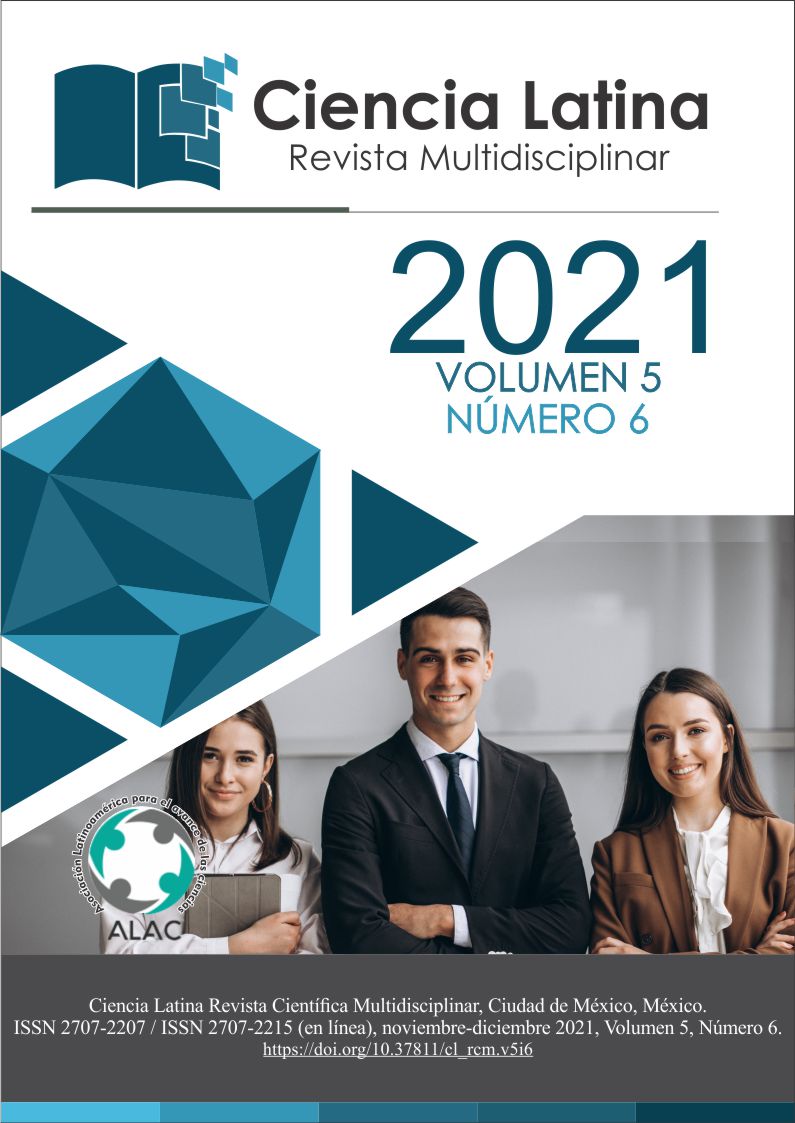



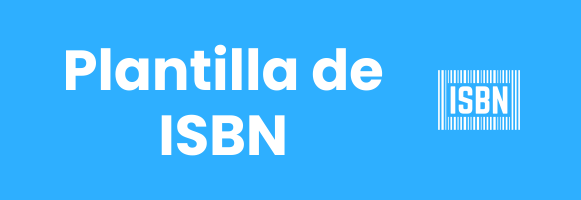




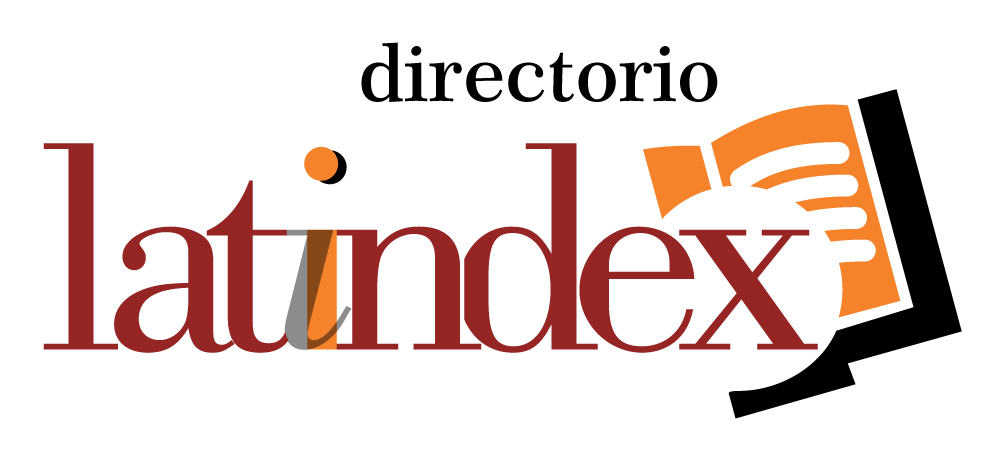
.png)
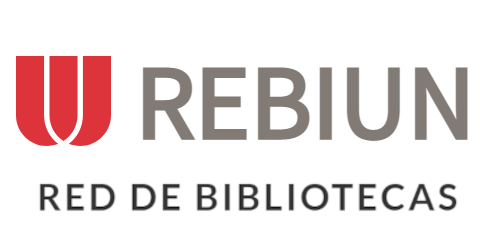














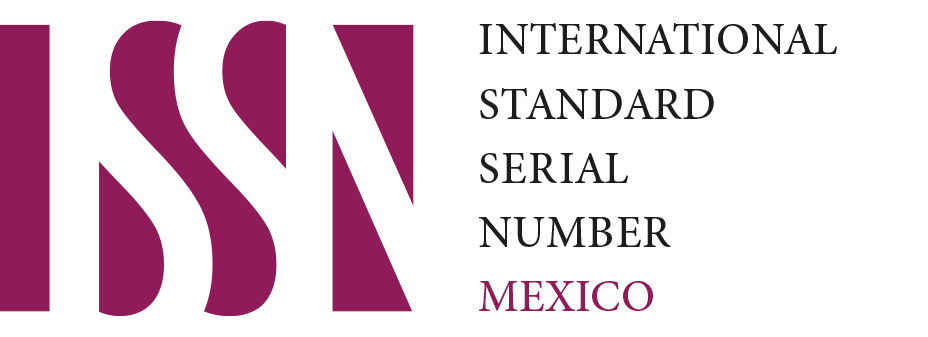
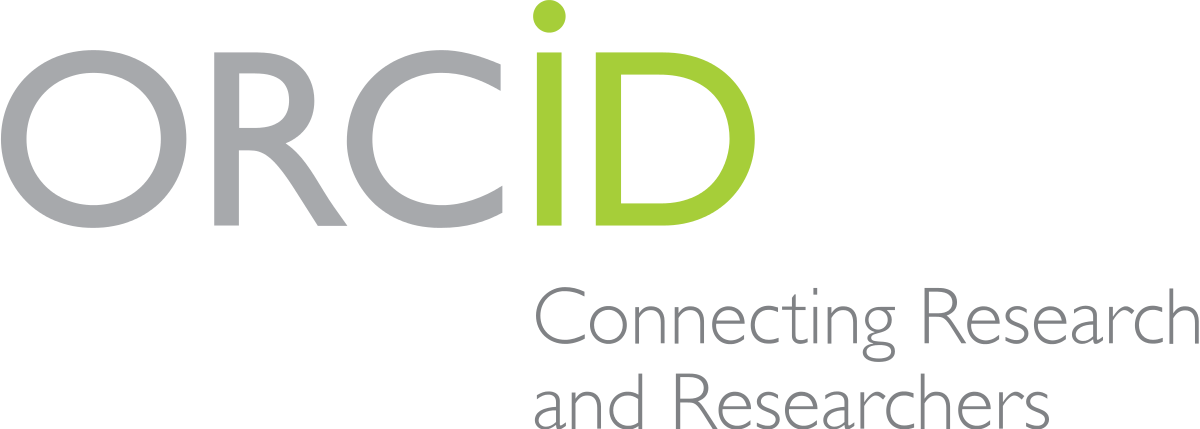



.png)
1.png)


